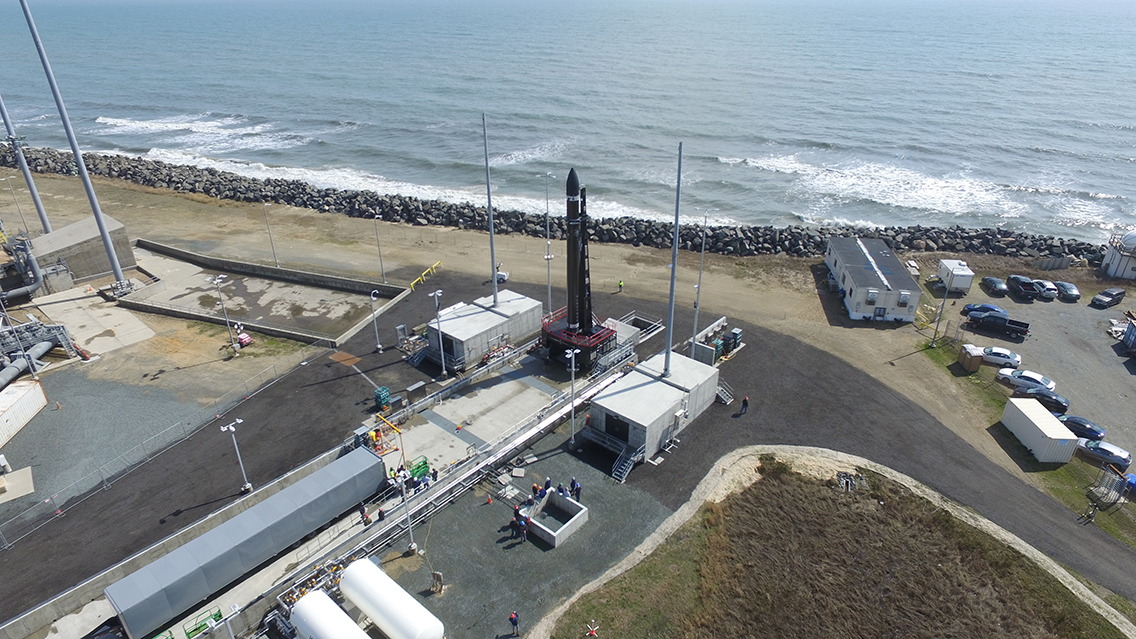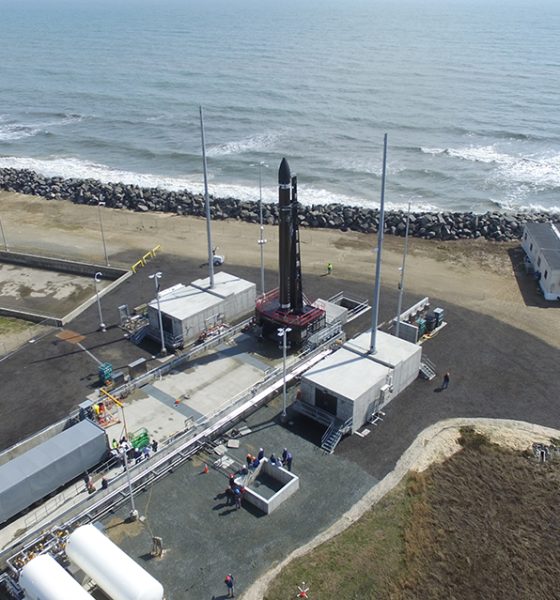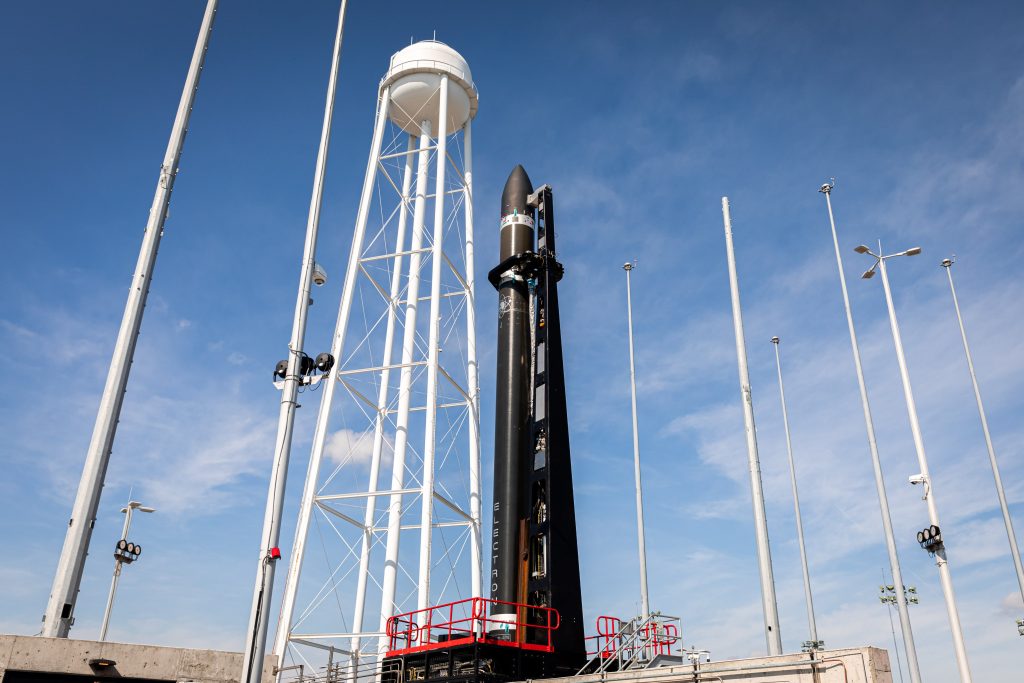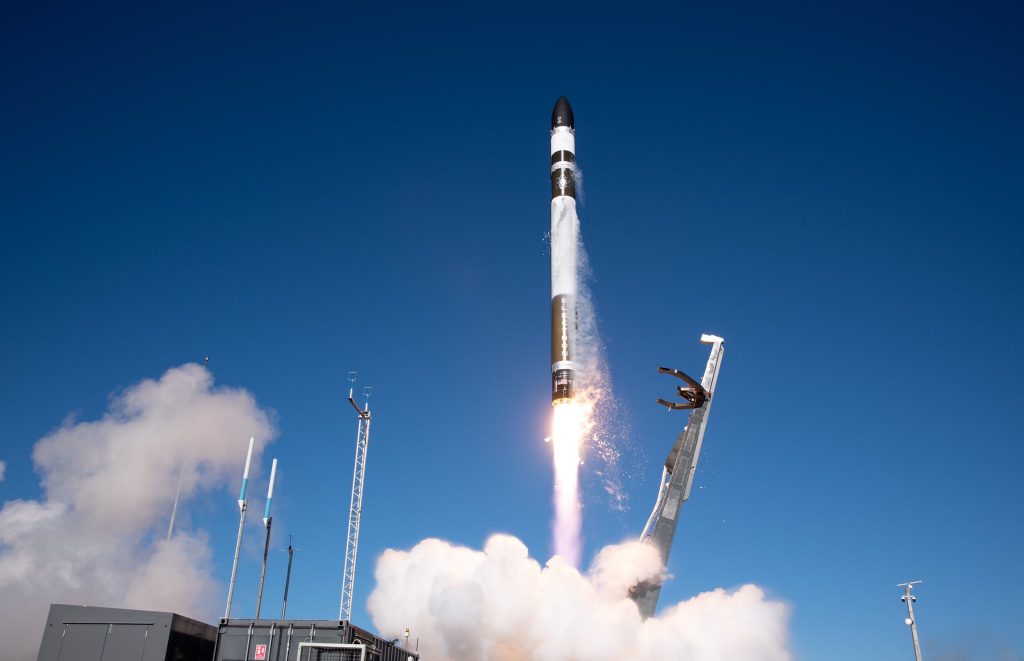

News
Rocket Lab Electron returns to flight as FAA approves launches from the US
Rocket Lab, the space systems company and small satellite launcher, returned to active launch status recently with the successful fourteenth launch of its Electron rocket. The “I Can’t Believe It’s Not Optical” mission marked Rocket Lab’s comeback after suffering an in-flight anomaly during Electron’s thirteenth flight on July 4, 2020.
Just nine weeks after the conclusion of the incident investigation, following its successful return to flight, Rocket Lab has announced that it has been granted a five-year Launch Operator License – permission to launch multiple missions a year – by the Federal Aviation Administration (FAA) for its new Launch Complex 2 in Virginia.

“I Can’t Believe It’s Not Optical,” Electron’s Return to Flight
The thirteenth flight of Electron “Pics or It Didn’t Happen” on July 4 began with a flawless launch from Launch Complex – 1A (LC-1A) in Mahia, New Zealand. During the flight of the second stage, there were indications that Electron had experienced a critical malfunction. Telemetry data confirmed that Electron had encountered an in-flight anomaly that ultimately resulted in the company’s first mission failure and loss of seven customer payloads.
The root cause of the anomaly was quickly tracked down to a single bad electrical connection on the second stage. Less than a month after the incident, Rocket Lab announced that it was able to reconstruct what occurred, make the necessary corrective measures, and ready to return Electron to flight.
Just a few short weeks later on August 24, Electron was on pad LC-1A in New Zealand for pre-flight testing ahead of its fourteenth – and return to flight – mission “I Can’t Believe It’s Not Optical.” The dedicated mission for San Francisco-based information services company, Capella Space, carried a single microsatellite called “Sequoia” to a circular orbit at approximately 500km.
According to a statement provided by Rocket Lab, Sequoia is the “first synthetic aperture radar (SAR) satellite to deliver publicly available data from a mid-inclination orbit over the U.S., Middle East, Korea, Japan, Europe, South East Asia, and Africa.” Sequoia is the first microsatellite in a constellation series that Capella Space says will “provide insights and data that can be used for security, agricultural and infrastructure monitoring, as well as disaster response and recovery.”

The success of “I Can’t Believe It’s Not Optical” marks the thirteenth successful mission and the deployment of Sequoia makes a total of 54 satellites delivered to orbit since Rocket Lab began operation in 2017. Rocket Lab founder and chief executive officer, Peter Beck, congratulated Capella Space on the successful deployment of its first microsatellite and celebrated the entire Rocket Lab team stating that “I’m also immensely proud of the team, their hard work, and dedication in returning Electron to the pad safely and quickly as we get back to frequent launches with an even more reliable launch vehicle for our small satellite customers.”
FAA certifies Electron launches from the US
In addition to LC-1A in New Zealand, Rocket Lab broke ground on a second launchpad located in the United States in late 2018. The launchpad was declared complete in December 2019.
Although operational, Launch Complex 2 located at the Mid-Atlantic Regional Spaceport within NASA’s Wallops Flight Facility on Wallops Island in Virginia still had a few milestones to achieve ahead of the first scheduled launch. In April 2020 an Electron rocket arrived at the pad for integrated systems tests. Two major hurdles left to clear ahead of launching an Electron from LC-2 was receiving a launch operator license from the Federal Aviation Administration (FAA) and receiving NASA certification of the Electron’s Autonomous Flight Termination System (AFTS).
On Tuesday, September 1, Rocket Lab announced that it had received a new 5-year Launch Operator License from the FAA. The license permits California-based launcher and space systems company to launch the Electron rocket from LC-2 multiple times a year without applying for a new license with every launch. This in addition to the Launch Complex 1 license means that Rocket Lab is now licensed to support up to 130 flights of Electron per year.
In addition, LC-1 is expected to expand and bring a second launchpad online, launch complex – 1B, sometime before the end of the year. Beck said, “Having FAA Launch Operator Licenses for missions from both Rocket Lab launch complexes enables us to provide rapid, responsive launch capability for small satellite operators. With 14 missions already launched from LC-1, Electron is well established as the reliable, flight-proven vehicle of choice for small sat missions spanning national security, science and exploration.”
Launch Complex 2 was specifically designed to support responsive missions for NASA and the United States government. The first mission from LC-2 is slated to lift the microsatellite STP-27RM for the United States Air Force as part of the Space Test Program. In 2021 Electron will send NASA’s CAPSTONE mission to a “Near Rectilinear Halo Orbit” (NRHO) around the Moon in support of NASA’s Artemis program.
Even more news…
On Thursday, September 3, Rocket Lab founder Peter Beck will host a webcast to provide an “exciting update” and discuss “the next chapter” of Rocket Lab. The webcast will go live at 2:00 pm ET (18:00UTC).

Elon Musk
Starlink passes 9 million active customers just weeks after hitting 8 million
The milestone highlights the accelerating growth of Starlink, which has now been adding over 20,000 new users per day.

SpaceX’s Starlink satellite internet service has continued its rapid global expansion, surpassing 9 million active customers just weeks after crossing the 8 million mark.
The milestone highlights the accelerating growth of Starlink, which has now been adding over 20,000 new users per day.
9 million customers
In a post on X, SpaceX stated that Starlink now serves over 9 million active users across 155 countries, territories, and markets. The company reached 8 million customers in early November, meaning it added roughly 1 million subscribers in under seven weeks, or about 21,275 new users on average per day.
“Starlink is connecting more than 9M active customers with high-speed internet across 155 countries, territories, and many other markets,” Starlink wrote in a post on its official X account. SpaceX President Gwynne Shotwell also celebrated the milestone on X. “A huge thank you to all of our customers and congrats to the Starlink team for such an incredible product,” she wrote.
That growth rate reflects both rising demand for broadband in underserved regions and Starlink’s expanding satellite constellation, which now includes more than 9,000 low-Earth-orbit satellites designed to deliver high-speed, low-latency internet worldwide.
Starlink’s momentum
Starlink’s momentum has been building up. SpaceX reported 4.6 million Starlink customers in December 2024, followed by 7 million by August 2025, and 8 million customers in November. Independent data also suggests Starlink usage is rising sharply, with Cloudflare reporting that global web traffic from Starlink users more than doubled in 2025, as noted in an Insider report.
Starlink’s momentum is increasingly tied to SpaceX’s broader financial outlook. Elon Musk has said the satellite network is “by far” the company’s largest revenue driver, and reports suggest SpaceX may be positioning itself for an initial public offering as soon as next year, with valuations estimated as high as $1.5 trillion. Musk has also suggested in the past that Starlink could have its own IPO in the future.
News
NVIDIA Director of Robotics: Tesla FSD v14 is the first AI to pass the “Physical Turing Test”
After testing FSD v14, Fan stated that his experience with FSD felt magical at first, but it soon started to feel like a routine.

NVIDIA Director of Robotics Jim Fan has praised Tesla’s Full Self-Driving (Supervised) v14 as the first AI to pass what he described as a “Physical Turing Test.”
After testing FSD v14, Fan stated that his experience with FSD felt magical at first, but it soon started to feel like a routine. And just like smartphones today, removing it now would “actively hurt.”
Jim Fan’s hands-on FSD v14 impressions
Fan, a leading researcher in embodied AI who is currently solving Physical AI at NVIDIA and spearheading the company’s Project GR00T initiative, noted that he actually was late to the Tesla game. He was, however, one of the first to try out FSD v14.
“I was very late to own a Tesla but among the earliest to try out FSD v14. It’s perhaps the first time I experience an AI that passes the Physical Turing Test: after a long day at work, you press a button, lay back, and couldn’t tell if a neural net or a human drove you home,” Fan wrote in a post on X.
Fan added: “Despite knowing exactly how robot learning works, I still find it magical watching the steering wheel turn by itself. First it feels surreal, next it becomes routine. Then, like the smartphone, taking it away actively hurts. This is how humanity gets rewired and glued to god-like technologies.”
The Physical Turing Test
The original Turing Test was conceived by Alan Turing in 1950, and it was aimed at determining if a machine could exhibit behavior that is equivalent to or indistinguishable from a human. By focusing on text-based conversations, the original Turing Test set a high bar for natural language processing and machine learning.
This test has been passed by today’s large language models. However, the capability to converse in a humanlike manner is a completely different challenge from performing real-world problem-solving or physical interactions. Thus, Fan introduced the Physical Turing Test, which challenges AI systems to demonstrate intelligence through physical actions.
Based on Fan’s comments, Tesla has demonstrated these intelligent physical actions with FSD v14. Elon Musk agreed with the NVIDIA executive, stating in a post on X that with FSD v14, “you can sense the sentience maturing.” Musk also praised Tesla AI, calling it the best “real-world AI” today.
News
Tesla AI team burns the Christmas midnight oil by releasing FSD v14.2.2.1
The update was released just a day after FSD v14.2.2 started rolling out to customers.

Tesla is burning the midnight oil this Christmas, with the Tesla AI team quietly rolling out Full Self-Driving (Supervised) v14.2.2.1 just a day after FSD v14.2.2 started rolling out to customers.
Tesla owner shares insights on FSD v14.2.2.1
Longtime Tesla owner and FSD tester @BLKMDL3 shared some insights following several drives with FSD v14.2.2.1 in rainy Los Angeles conditions with standing water and faded lane lines. He reported zero steering hesitation or stutter, confident lane changes, and maneuvers executed with precision that evoked the performance of Tesla’s driverless Robotaxis in Austin.
Parking performance impressed, with most spots nailed perfectly, including tight, sharp turns, in single attempts without shaky steering. One minor offset happened only due to another vehicle that was parked over the line, which FSD accommodated by a few extra inches. In rain that typically erases road markings, FSD visualized lanes and turn lines better than humans, positioning itself flawlessly when entering new streets as well.
“Took it up a dark, wet, and twisty canyon road up and down the hill tonight and it went very well as to be expected. Stayed centered in the lane, kept speed well and gives a confidence inspiring steering feel where it handles these curvy roads better than the majority of human drivers,” the Tesla owner wrote in a post on X.
Tesla’s FSD v14.2.2 update
Just a day before FSD v14.2.2.1’s release, Tesla rolled out FSD v14.2.2, which was focused on smoother real-world performance, better obstacle awareness, and precise end-of-trip routing. According to the update’s release notes, FSD v14.2.2 upgrades the vision encoder neural network with higher resolution features, enhancing detection of emergency vehicles, road obstacles, and human gestures.
New Arrival Options also allowed users to select preferred drop-off styles, such as Parking Lot, Street, Driveway, Parking Garage, or Curbside, with the navigation pin automatically adjusting to the ideal spot. Other refinements include pulling over for emergency vehicles, real-time vision-based detours for blocked roads, improved gate and debris handling, and Speed Profiles for customized driving styles.








